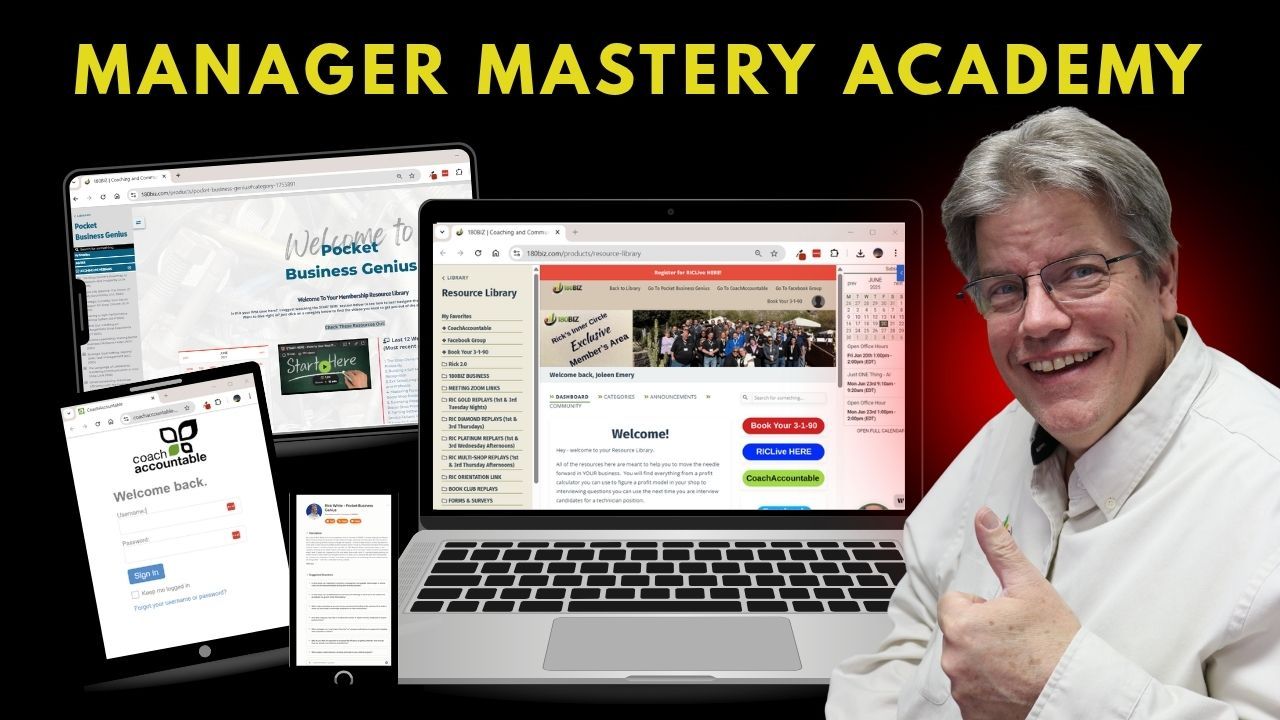Effective Communication by Auto Repair Shop Owners includes Planning
Communicating Effectively Step 4 - Plan to Move by Rick White, President 180BIZ
Over the last three weeks, we've talked about effective communication. We talked about a framework that allows you to engage and attract the people that are in your life. Whether that's at work or home, it doesn't make a difference. The first step is to understand and appreciate their world. To see it through their eyes. The more perspectives you have in a situation, the better off you're going to be, the more influence you're going to have, the more power you're going to have. So, the first step is to understand and appreciate.
The second step is to identify. Now, this is whether good or bad. Whether you're getting the results you want not, you still want to have these conversations. It’s to see what's happening and correct it, or to see what's happening and repeat it. I want you to understand on the second part of identify. This is where we're going to invite the other person in. But if I ask, “What's causing it?” I guarantee every single time you're going to get, “I don't know.” That doesn't change anything. Accepting “I don’t know” creates sameness. You're stuck. Instead, add one word to your question.
What do you think might be causing this? That gives the other person permission to spitball. It gives them permission to give you some ideas if they don't have the answer. If you're asking someone why it's like this, the unspoken expectation is they're going to give you the correct answer. And we're afraid of not giving you the right answer. Everyone is. But if you say might, ask, “What do you think might be causing this?” it gives them permission to give different thoughts and ideas. So, the second step is to identify.
Then the third step is to brainstorm. What do you think we could do about it? Or what do you think we might be able to do about it? And once again, the word might will give people permission to get out there and start thinking about it.
Now it's the fourth step. This is the step where it all comes together. Now that you've seen it and understand it from their perspective, you appreciate it. You have identified different areas that might be causing the issue. And you've got some ideas, some brainstorming on how to either repeat or avoid, to get better. Now it's time to take action. The fourth step is action. It's where you create a plan. It's where you and whoever you're speaking with come together, create a plan. And in that plan, you not only determine what to do, but you identify who will do it and what you expect as a result. That's part of the plan. Determine “if you do this and I do that and the advisor does this, or the tech does that, this is what we expect will happen.
That's really powerful because it not only focuses on the task but also focuses on the outcome. Outcome is so, so important. Outcome gives you a ruler. It's the action. It's creating that plan with tasks and outcomes in mind. So, we're going to do this, and our expectation is we're going to get this. It shows you where you're going. It gives everyone that's involved in the conversation, a way to measure how effective the plan is right now. Part 4.5 is we measure and modify. We repeat the process over. then we start that conversation all over again.
This is a very simple four-step process where you can really start to implement change as a team. The days of you as an owner having all the answers are over. A great leader doesn't have all the answers. A great leader has a destination. A great leader knows why that destination is important. A great leader sees the potential in others and pulls it out of them. A great leader is all about influence. The highest calling of a leader is to create other leaders. So, let's stop pretending we must have all the answers. Let's stop avoiding a conversation because we're afraid. Someone's going to ask us a question that we don't know the answer to. Instead of avoiding that question, give that sucker a big hug because that question you don't have the answer to is where all your growth is.
So just as a recap to the steps of effective communication is (1)understand and appreciate their perspective to this situation, (2) identify potential issues, (3) brainstorm on either how to change that or how to reproduce it. And then (4) is a plan.
God bless, stay safe and go make some money.
Want to learn more about transforming your business?
Join my mailing list to get advice you can use to improve your shop, the day it lands in your inbox.
Don't worry, your information will not be shared.
We hate SPAM. We will never sell your information, for any reason.



